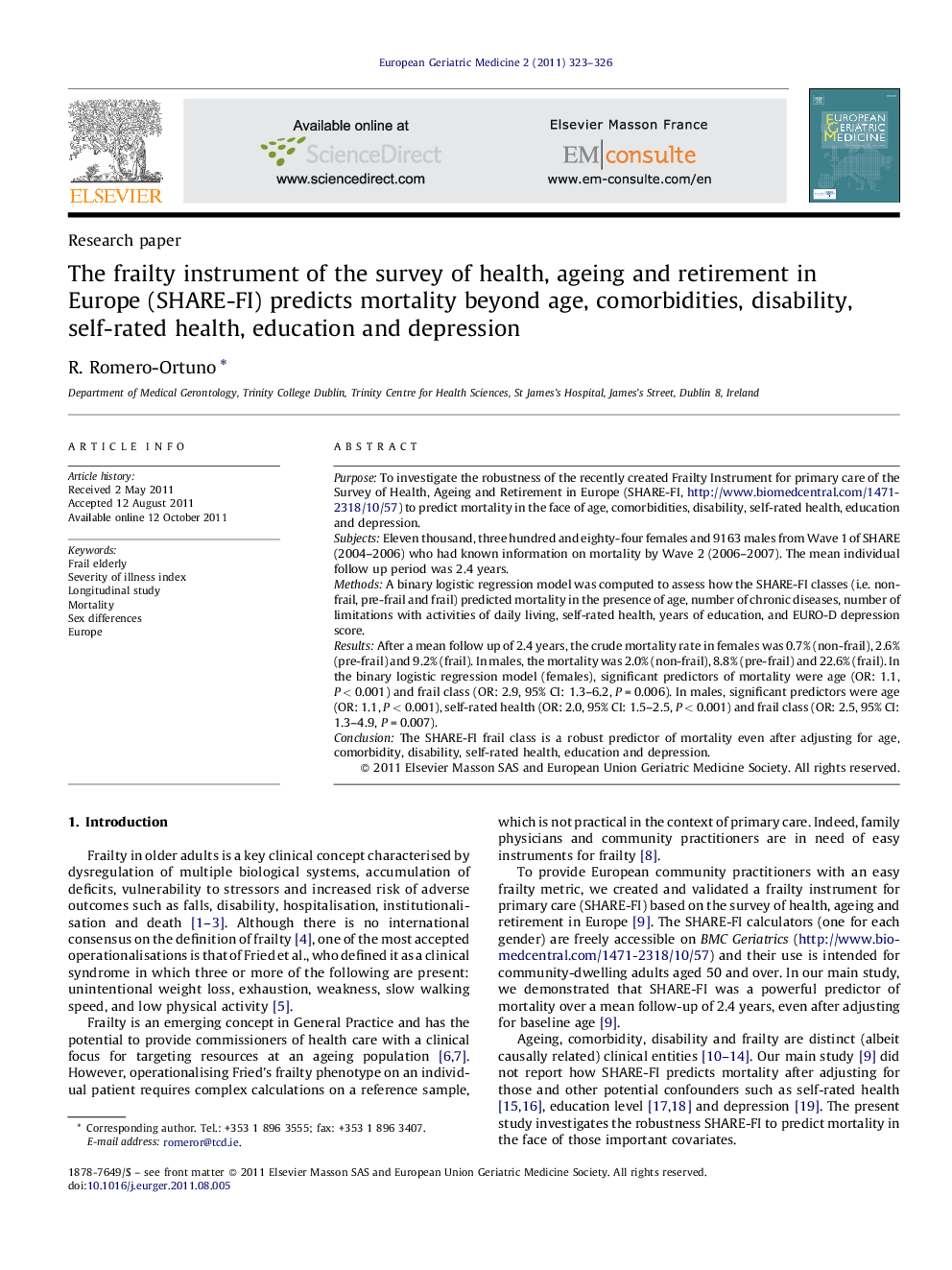| Article ID | Journal | Published Year | Pages | File Type |
|---|---|---|---|---|
| 3324676 | European Geriatric Medicine | 2011 | 4 Pages |
PurposeTo investigate the robustness of the recently created Frailty Instrument for primary care of the Survey of Health, Ageing and Retirement in Europe (SHARE-FI, http://www.biomedcentral.com/1471-2318/10/57) to predict mortality in the face of age, comorbidities, disability, self-rated health, education and depression.SubjectsEleven thousand, three hundred and eighty-four females and 9163 males from Wave 1 of SHARE (2004–2006) who had known information on mortality by Wave 2 (2006–2007). The mean individual follow up period was 2.4 years.MethodsA binary logistic regression model was computed to assess how the SHARE-FI classes (i.e. non-frail, pre-frail and frail) predicted mortality in the presence of age, number of chronic diseases, number of limitations with activities of daily living, self-rated health, years of education, and EURO-D depression score.ResultsAfter a mean follow up of 2.4 years, the crude mortality rate in females was 0.7% (non-frail), 2.6% (pre-frail) and 9.2% (frail). In males, the mortality was 2.0% (non-frail), 8.8% (pre-frail) and 22.6% (frail). In the binary logistic regression model (females), significant predictors of mortality were age (OR: 1.1, P < 0.001) and frail class (OR: 2.9, 95% CI: 1.3–6.2, P = 0.006). In males, significant predictors were age (OR: 1.1, P < 0.001), self-rated health (OR: 2.0, 95% CI: 1.5–2.5, P < 0.001) and frail class (OR: 2.5, 95% CI: 1.3–4.9, P = 0.007).ConclusionThe SHARE-FI frail class is a robust predictor of mortality even after adjusting for age, comorbidity, disability, self-rated health, education and depression.
